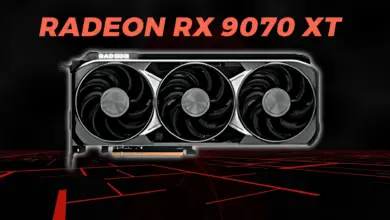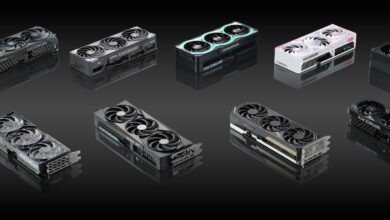The GPU sphere keeps evolving every year and while we are mostly used to either Nvidia Geforce or AMD Radeon graphics cards, the time has changed drastically to the point where Intel has presented itself as another credible competitor.
The first-ever Intel GPU lineup, the Arc Alchemist family has shown the world that Intel can be a potential threat to the GPU giant i.e., Nvidia. While it’s still far from now when we can see Intel being on top, the flagship ARC A770 GPU can be a viable option for those looking for a solid mid-range GPU.
On the other hand, we have the Geforce RTX 3060 from the Ampere family which remains one of the most popular mid-range GPUs since its launch. In this post, we will analyze both GPUs to conclude the ultimate winner in the mid-range category.
At a Glance
Specifications and Architecture
| Specs/GPU | ARC A770 | RTX 3060 |
|---|---|---|
| GPU Chip | DG2-512 | GA106 |
| Process Node | 6nm | 8nm |
| Shading Units | 4096/32 Xe Cores | 3584 Cuda Cores |
| Memory | 8/16GB GDDR6 | 8/12GB GDDR6 |
| Memory Bus | 256-bit | 128/192-bit |
| TDP | 225W | 170W |
Nvidia’s RTX 3060 is based on the Ampere architecture and uses Samsung’s 8nm process node. The GPU used is GA106 which is a 276 mm2 die that packs a total of 3584 Cuda Cores. It’s considerably smaller than the DG2-512 GPU die on the A770 which is 406 mm2 in size.
The A770 is the flagship Alchemist GPU that uses TSMC’s 6nm process node and packs a total of 4096 shading units or 32 Xe Cores. Theoretically, smaller process nodes result in more power efficiency but due to the significant differences in specs of both, the A770 is rated at a higher TDP of 225W compared to 170W of the RTX 3060.
What’s interesting here is the memory size that affects the buyer’s choice. Both GPUs are available in two different memory configurations with the RTX 3060 boasting 8 and 12GB memory options while the A770 has an 8 and 16GB edition. The big difference here is that the A770 comes with a 256-bit memory bus resulting in a higher memory bandwidth of 512GB/s compared to the RTX 3060 which comes with a 128/192-bit memory bus.
Other specs like clock speeds and render configurations are drastically different between the two and there can’t be a direction comparison we can scrutinize. So, it’s time to delve into the gaming performance and see which one delivers higher fps.
Gaming Performance

Without real-gaming benchmarks, it’s impossible to conclude the winner of the two. Comparing the respective scores for each graphics card in different games is a little complicated but if we try to take a look at the big picture, things come out pretty conclusively.
While a lot of benchmarks were done at the initial release of the ARC A770, some were done after a few driver updates. Since ARC GPUs suffered from poor optimizations initially, the true potential of these GPUs only came out after several updates.
We will elaborate on this after some time but right now if we collect benchmarks from some popular PC hardware review sites and YouTube channels like Testing Games, the ARC A770 is a clear winner between the two. Here we are specifically taking the 16GB A770 and the 12GB RTX 3060 editions to avoid any bottlenecks as a result of memory.
The one-year-old benchmarks from Testing Games reveal that the ARC A770 is roughly 14% faster than the RTX 3060 if we remove the CSGO as the game was optimized for this GPU much later. However, one of the latest ARC A770 review from Techspot shows that the A770 is just 4% faster than the RTX 3060 at 1080p resolution across 12 games.
Again, CSGO was the main culprit here which doesn’t like the ARC cards as much as it loves the 3060. Switching to 1440p resolution, the real potential of A770 starts to appear. The A770 comes out to be around 12% faster than the 3060 which shows how much impact a wider memory bus has on gaming at higher resolutions.
Similarly, in one of the newest benchmarks by Tomshardware, the A770 outperforms the 3060 by 13% at 1080p resolution. Of course, the choice of games matters here but in summary, it can be clearly seen that the A770 is noticeably ahead of the Ampere GPU at both resolutions.
Drivers and Tech

The initial launch of the A770 was close to a disaster. This was primarily because of poor game optimizations and immature drivers. Since then Intel worked continuously to improve its drivers and added support for several games in each update. This resulted in a drastic performance uplift compared to what we had with the first driver version.
Moreover, the A770 is also capable of providing Ray Tracing support. However, the RTX 3060 wins by miles and the A770 is simply not your best option for dynamic lighting and shadows. XeSS is another great tech that is in its development phase and can’t outshine DLSS, particularly DLSS 3.5 which further enhances the Ray Tracing quality and performance at the same time.
There is no debate on the superior Nvidia drivers and better game optimizations but it won’t be fair if we completely disregard Intel’s driver developments. Regardless of how good the gaming techs are infused with the RTX 3060, the A770 clearly shows who is superior in gaming.
Efficiency
The RTX 3060 was and is still one of the most power-efficient GPUs in the market. Only the Ada cards brought a significant increase in efficiency and the A770 is no match here. Still, as tested by Guru3D, the A770 consumes around 22W more in gaming loads which is acceptable but the Peak and idle power consumption is still an issue for the ARC GPU.
Pricing and Value

Prices of PC hardware change all the time. So, it can be pretty confusing at times to come to a conclusion based on the launch price of GPUs. Both GPUs were launched for $329. Not much difference here but this makes both of them equivalent in their value for price.
Come to the present, both GPUs are available at $270-$300. This makes choosing between the two a difficult task but considering the gaming performance, the ARC A770 is the winner here.
The Verdict
The ARC A770 is clearly a faster GPU than the RTX 3060 and is only getting stronger with each driver update. However, limited game support compared to the RTX 3060 and inferior upscaling and ray tracing performance can be logical reasons for choosing the Nvidia card.
Considering that most gamers don’t want to enable Ray Tracing on a mid-range GPU, the A770 sits in a better position. Also, the bigger memory size and wider memory bus play a crucial role in yielding higher performance at higher resolutions.






